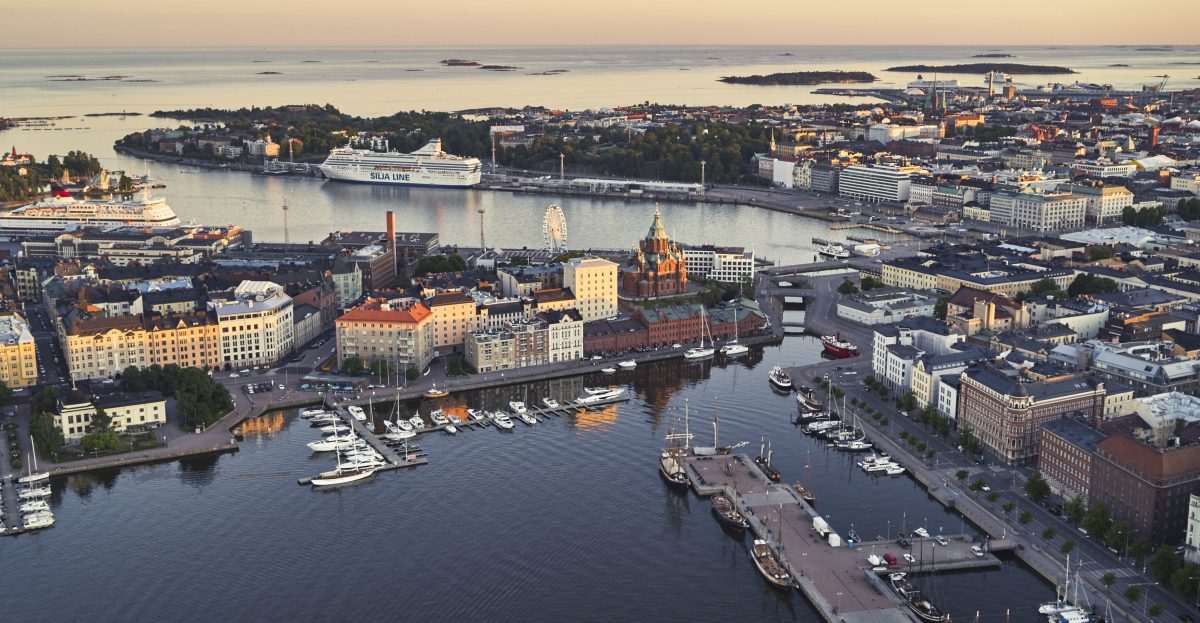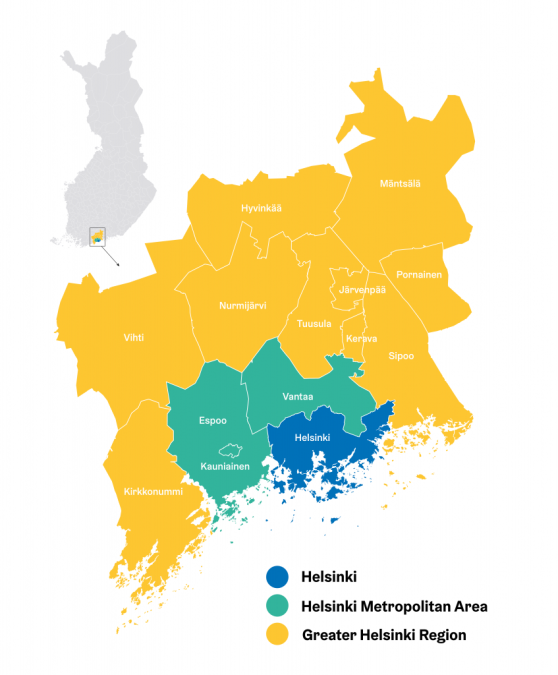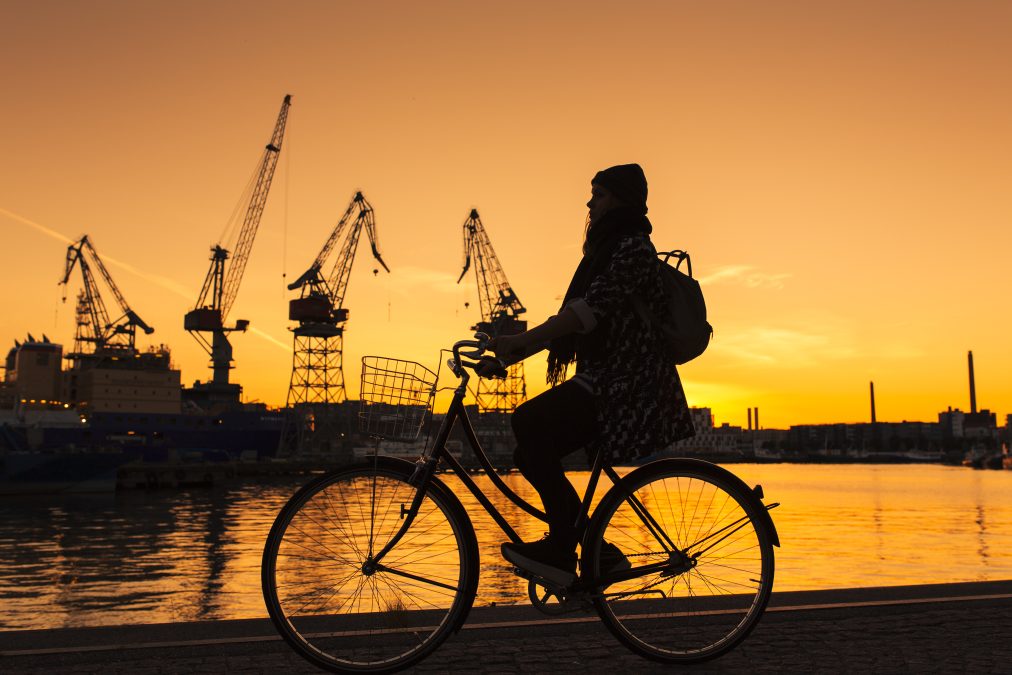About the city

Helsinki is Finland’s capital
The country’s largest urban area has been fundamentally shaped by its maritime environment. Helsinki’s peaceful shoreline is one of the city’s most beautiful features.

Population
Helsinki is home to around 650,000 people. More than 1.5 million inhabitants live in the larger metropolitan area, which includes the cities of Helsinki, Espoo, Vantaa and Kauniainen. The metropolitan area is located in the greater Helsinki region, which is in turn situated in the southern Finnish province of Uusimaa. Finland is a member of the European Union (EU), and uses the euro as its currency.
What are the different districts of Helsinki like? The MyHelsinki website showcases the best that Helsinki has to offer, including this presentation of the city’s diverse neighbourhoods. Take some time to get to know Helsinki’s unique districts today!
Language
Finland has two national languages: Finnish and Swedish. In Helsinki, Finnish is the primary language, as only six per cent of the city’s inhabitants speak Swedish as a mother tongue. Another sixteen per cent of Helsinki residents speak some other tongue as their first language. In addition to its service in other languages, Finland’s public broadcasting company Yle reports the daily news in English.
Although the majority of people in Helsinki speak excellent English, learning to speak Finnish can bring many benefits. Learning Swedish is also helpful, but fewer people in the city use it on a daily basis.
Climate
Helsinki is one of the northernmost capitals in the world. Despite this fact, its climate is surprisingly temperate. It rarely gets too cold, and in the summer, the average temperature is a pleasant 20°C (70°F) or so. This is why most of the city’s residents agree that the Helsinki summer climate is just right for spending the long bright days outdoors.
And don’t worry about feeling chilly in Helsinki, as every home and office in the city is very well heated. See our Nature section for tips on dressing appropriately throughout the changing seasons.

Seasonal lighting
Because of its northern location, the amount of daylight hours in Helsinki changes greatly over the year. At the peak of summer, the sun shines for close to nineteen hours each day.
A safe and trusting society
A recent study found that the clear majority of Helsinki residents feel very safe. In addition, residents of the country claim Europe’s highest levels of trust in others and many authorities. As a sign of this communal trust, lost items are almost always returned.
Finns tend to choose their words carefully and avoid unnecessary small talk. At first this might seem strange, but with time you may learn to appreciate it. This guide to Finnish customs and manners may help to explain some of the things that make Finnish inhabitants tick.
Perhaps most importantly, however, as a Nordic welfare state, Finland assumes a shared public responsibility for the economic and social well-being of its inhabitants. The general consensus is that caring for the least fortunate improves the wellbeing of everyone. This brings freedom and peace of mind, especially in the face of uncertainty.
Cost of living in Helsinki
The cost of living in Helsinki is relatively high. Things like groceries and dining out are more expensive than the European average. In contrast, rental prices are reasonable when compared to other international capitals.
Several benefits are available to eligible residents considered to be staying in the country permanently. For this reason, true out-of-pocket costs for residents of Helsinki vary considerably. But on the whole, life in Helsinki is rather pricey.
Average cost of living, per month in euros
| Living arrangement | Rent | Other | Total |
|---|---|---|---|
| Single occupant inside the city centre | 800 | 650 | 1 450 |
| Single occupant outside the city centre | 600 | 650 | 1 250 |
| Family of four inside the city centre | 1 650 | 2 000 | 3 650 |
| Family of four outside the city centre | 1 300 | 2 000 | 3 300 |
Top city in many rankings
What does it feel like to live in the world’s happiest country? Move to Helsinki and find out! Finland has held this title for seven years running.
With free healthcare and education for eligible residents, loving and professional childcare, generous parental leaves and a great work-life balance, living in Helsinki is arguably the best choice for young families.
Helsinki is a place of growth
Helsinki’s 2021-2025 City Strategy sets out to make Finland’s capital a place where different lifestyles and opinions can co-exist in harmony. To this end, the city is actively seeking to attract international businesses, business owners and work-seeking migrants. Opportunities to study in English are being expanded at all education levels.
Helsinki is one of Europe’s top startup hubs and a hotbed of business opportunity and innovation. The pioneering city has boldly pushed to provide its residents with a therapy guarantee and is working to eliminate homelessness by 2025. Helsinki pursues only sustainable growth and has moved its goal to achieve carbon neutrality up five years to 2030.
The City of Helsinki’s highest decision-making authority is the City Council, which is elected every four years. The council appoints a mayor and four deputy mayors to oversee municipal operations. If you are interested in learning more about Helsinki’s municipal services and operations, check out the City of Helsinki website.
